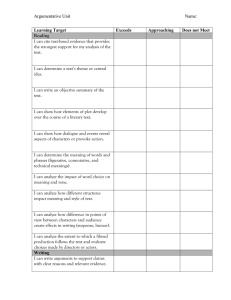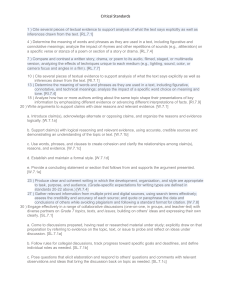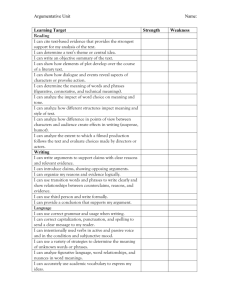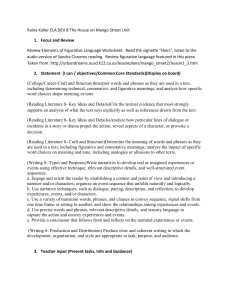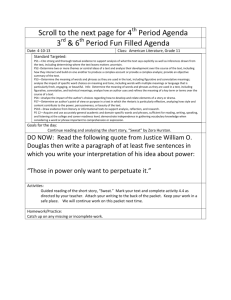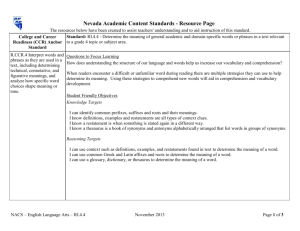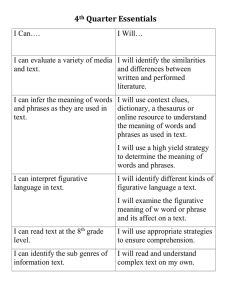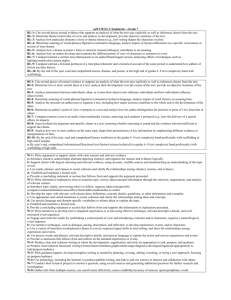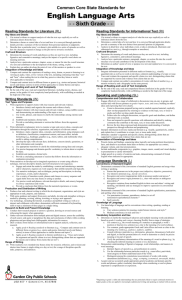RL5 Determining Word Meaning
advertisement
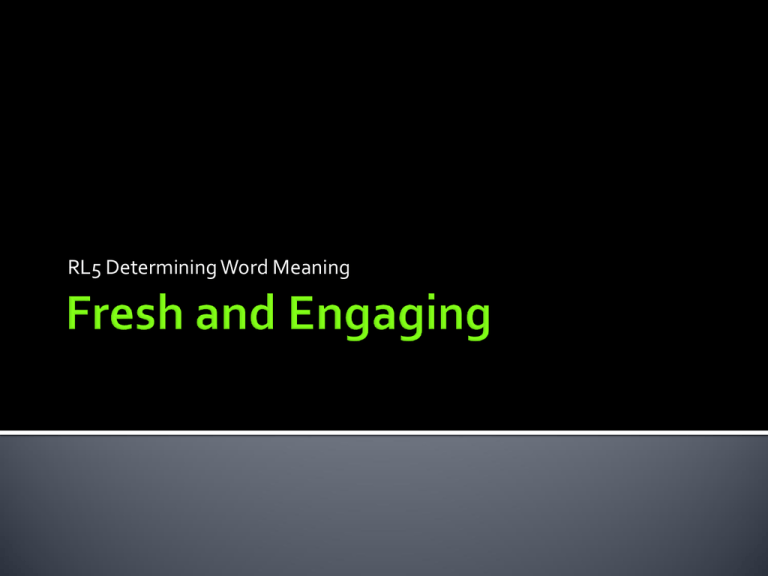
RL5 Determining Word Meaning RL5: Determining Word Meanings I can determine the meaning of words and phrases as they are used in a text, including figurative, connotative, and technical, and deeply analyze the impact of specific word choice on meaning and tone, especially with fresh and engaging literature (Shakespeare, 4 etc.). I can determine the meaning of words and phrases as they are used in a text, including figurative, connotative, and technical, and analyze the impact of specific word choice on meaning and tone, 3 especially with fresh and engaging literature (Shakespeare, etc.). I can determine the meaning of words and phrases as they are 2 used in a text, including figurative, connotative and technical. I can determine the literal meaning of words and phrases as they 1 are used in a text. 1. 2. 3. What figurative language trick is being used? What does the quote mean? What tone does the quote create? How? Antithesis: the balancing of two contrasting ideas, words, phrases, or sentences “with mirth in funeral and with dirge in marriage” Personification: giving human characteristics to non-human or inanimate things “The air bites…it is nipping” (1.4.1-2). Metaphor: comparison made between two unlike things that actually have something in common. The rose walked into the ballroom. Simile: same as above, but using “like” or “as” She looked like a rose in her red dress. Pun: a word or phrase with two meanings “New study of obesity looks for larger test group” “Kids make nutritious snacks” Double Entendre: a pun in which the second meaning is naughty Classical Allusion: references to people and places of Greek and Roman literature He was powerful like Zeus. Allusion: references to historical event or another text Like Washington, he braved battle for a good cause. Parallel Construction: similar structure in a pair or series of words, phrases, or clauses. “The more we do, the more we can do” (William Hazlitt) Anastrophe: out of order words “Echoed the hills” versus “the hills echoed”
